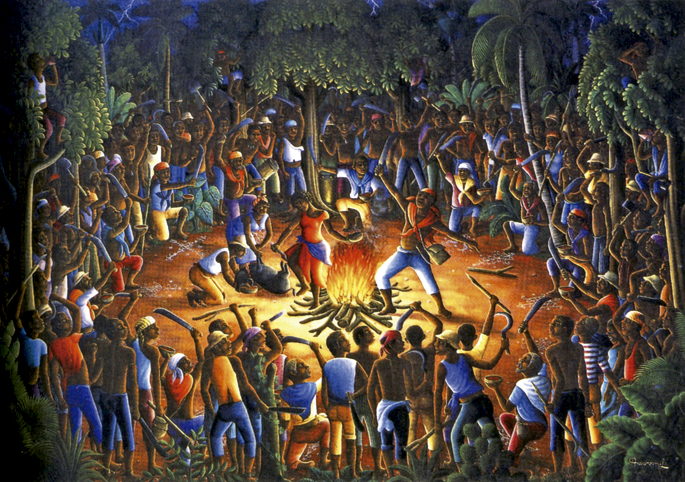

Born 14 August 1791. Several slaves, under the command of Dutty Boukman Houngan or the priest, met at a voodoo ceremony. Boukman, after naming the leaders of the movement, urged them to stand up against the French oppressors.
A week later, on the night of 21 August, the slaves of Saint-Dominguez, which was called the French colony, were raised and the Haitian Revolution began.
Although Bois-Caiman is considered the catalyst of the revolt, the lack of evidence and the few fuzzy testimonies have opened the way to varied versions. David Geggus, historian of the University of Florida, says that the caiman forest did not hold a single meeting. First, there was a ceremony of about 200 people, mainly religious. And two or three days later, a more clandestine meeting was held between Boukman and the leaders of the revolution to plan the uprising.
Several Haitian historians have questioned Bois-Caiman. Specifically, Léon-François Hoffmann stated in 1991 that Antoine Dalmas, a French plantation physician, was the inventor of history to despise slaves and their beliefs.
The myth or reality, according to Swedish researcher Markel Thylefors, “the episode of Bois-Caiman is an important part of the national identity of the Haitians, as it is linked to Haiti’s own generation”.
Haiti was the most important slave revolt since the time of Spartacus. Unlike the uprising in Ancient Rome, slaves were won in Haiti. The revolution changed the institution of slavery, provoked a review of relations between races and rocked European colonialism. The conversion of the balance of power in the Atlantic was also inevitable. At home, the slaves were liberated, fought to maintain freedom and, in 1804, founded the sovereign state of Haiti.
The nearsighted view of the West has limited the introduction of needles into the wrists to harm a bouquet. For those Caribbean slaves, it was much more. In the words of David Geggus, “the Buddha of Bois-Caiman became a unifying and revolutionary force.”